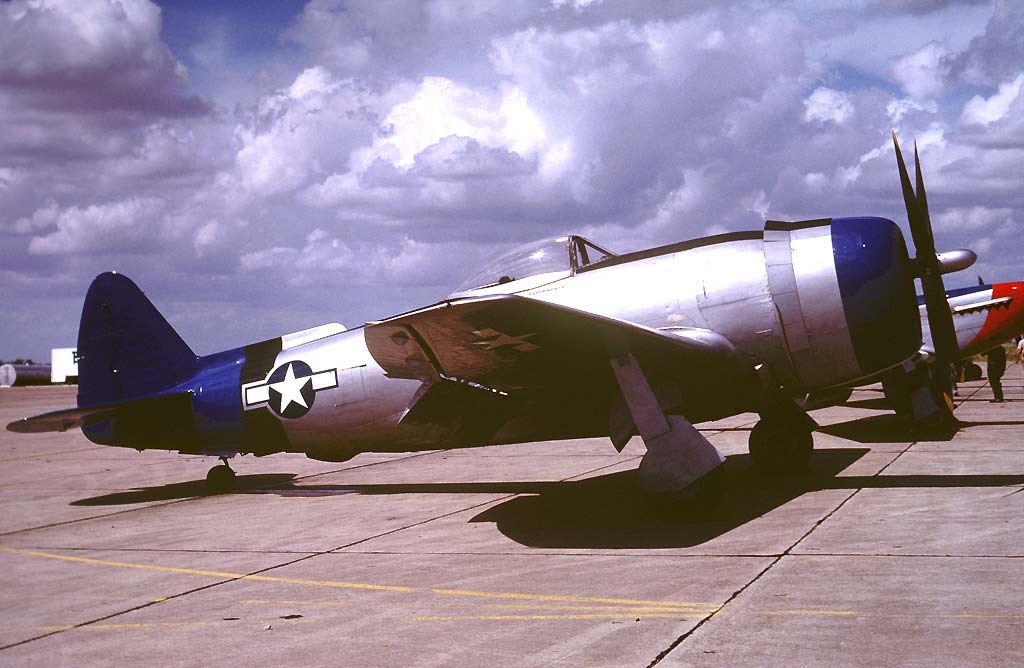The P-47N Thunderbolt, a robust WWII-era American fighter, known for its heavy armament, extensive range, and rugged airframe, powered by a Pratt & Whitney R-2800.
This article examines the Republic P-47N Thunderbolt, an advanced variant of the renowned P-47 series. It covers the historical context and development goals, focusing on the need for a long-range escort fighter in the Pacific Theater. The design section highlights its technical specifications and modifications, while the performance analysis compares it with contemporaries. The military use and combat section details its armament, operational roles, and effectiveness in World War II, followed by a conclusion summarizing its legacy in aviation history.
The Republic P-47N Thunderbolt was a critical development in the P-47 series, one of the largest and most powerful fighters used during World War II by the United States Army Air Forces (USAAF).
History of the Development of the Republic P-47N Thunderbolt:
The development of the P-47N was driven by the USAAF’s need for a high-performance, long-range escort fighter capable of accompanying bombers across the vast expanses of the Pacific Ocean during World War II. The Republic Aviation Company, under the leadership of Alexander Kartveli, initiated the development of this advanced Thunderbolt variant to meet these specific operational requirements.
The program was launched in response to the limitations faced by earlier P-47 models in range and payload capacity. The first flight of the P-47N took place on July 22, 1944. Unlike later military aircraft, it did not have a specific NATO nickname as it predated the formation of NATO.
Design of the Republic P-47N Thunderbolt:
The P-47N was a testament to engineering adaptability and enhancement. It featured a wingspan of 42 feet 7 inches (12.98 meters) and a length of 36 feet 2 inches (11.02 meters). The key design change in the N variant was the addition of two 96-gallon fuel tanks at the wingtips, extending the wingspan and significantly increasing its fuel capacity.
The aircraft’s robust airframe and powerful Pratt & Whitney R-2800 Double Wasp radial engine, capable of producing 2,800 horsepower, were central to its design. The P-47N also boasted improved aerodynamics and a stronger landing gear to handle the additional weight.
Despite these improvements, the P-47N faced challenges. The extended wings increased the risk of wingtip stalling, and the aircraft was generally less agile than some lighter fighters. However, its range, payload, and durability were unmatched in its class.

Performance of the Republic P-47N Thunderbolt:
Performance-wise, the P-47N was a standout in the WWII fighter lineup. The Double Wasp engine enabled a top speed of approximately 467 mph (752 km/h) and a climb rate that was competitive with other high-performance fighters of the era. It had an impressive service ceiling of 43,000 feet (13,106 meters) and a maximum range of about 2,350 miles (3,782 kilometers) with external fuel tanks.
When compared with its contemporaries, the P-47N was unique in its combination of high speed, formidable armament, long range, and ruggedness. It outperformed many fighters in range and payload, though it was generally less agile than smaller fighters like the P-51 Mustang.
Military Use and Combat of the Republic P-47N Thunderbolt:
In combat, the P-47N was a formidable opponent. It was heavily armed with eight .50 caliber M2 Browning machine guns and could carry a variety of bombs and rockets. This armament, combined with its range, made it ideal for long-range escort missions and ground attack roles in the Pacific Theater.
The P-47N saw extensive action in World War II, particularly in the Pacific. It escorted B-29 bombers over Japan, proving crucial in achieving air superiority. Its ability to sustain heavy damage and still return home earned it a rugged reputation among pilots.
The Thunderbolt competed with various Axis fighters, including the Japanese Mitsubishi A6M Zero. The P-47N’s superior speed and firepower often gave it the edge in these encounters.
After the war, the P-47N was sold to several countries but was eventually phased out in favor of jet-powered aircraft. It saw its last significant military use in the 1950s and was replaced by fighters like the F-86 Sabre.
The Republic P-47N Thunderbolt represents a pinnacle in piston-engine fighter development. Its combination of range, firepower, and ruggedness made it an essential component of the Allied forces in the Pacific Theater during World War II. While it eventually gave way to the jet age, the P-47
N’s legacy in military aviation history remains significant, symbolizing the technological and tactical advancements of its time.
Back to the Warbirds section.